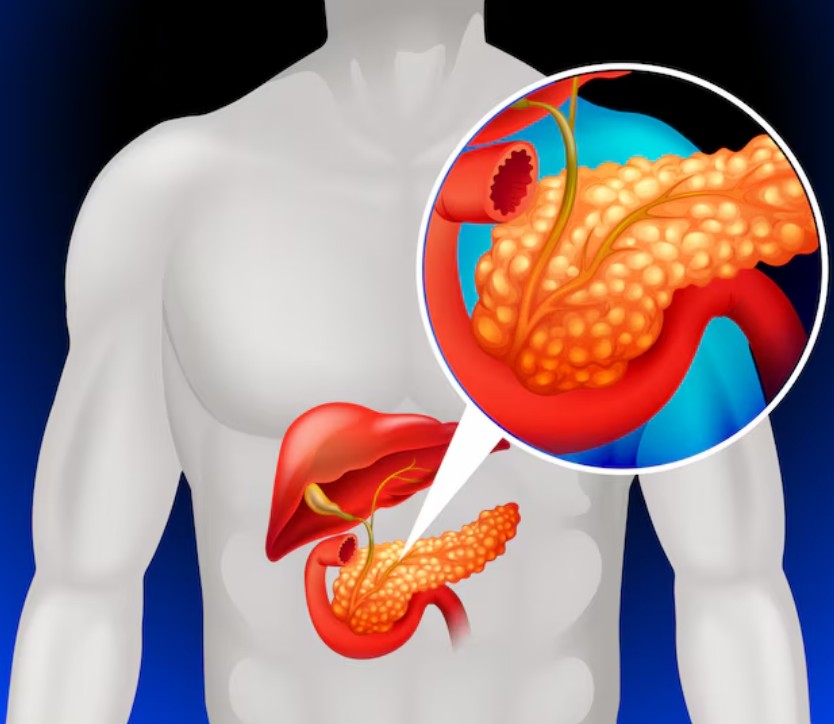
Pancreatic cancer is often referred to as a ‘silent killer’, but the truth is more complicated. The early warning signs of pancreatic cancer do exist, but they are simply subtle, easy to dismiss and often mistaken for routine digestive discomfort. In India, where the disease accounts for about 1.3% of all cancer cases yet is usually detected at an advanced stage, recognising these cues early can significantly improve outcomes. As Dr Seema Jagiasi, Cancer Physician, M|O|C Kemps Corner, notes, many patients experience vague symptoms for months before seeking help. Understanding these early changes is the first step towards timely diagnosis.

A dull, nagging pain around the upper abdomen that radiates towards the back is one of the most common early warning signs of pancreatic cancer. Unlike the pain of acidity or gastritis, this pain does not reliably improve with antacids, as tumours in the pancreas often irritate nearby nerves.
Sudden weight loss, especially when you're not actively trying to lose weight, should raise concern. Studies reveal that over 70% of individuals diagnosed with pancreatic cancer report weight loss before detection. In India, such symptoms are often chalked up to stress, but they warrant serious attention.
This lesser-known symptom is gaining recognition. Up to a quarter of pancreatic cancer patients develop diabetes months or even years before diagnosis. If someone who has never had diabetes suddenly becomes diabetic and simultaneously loses weight, it could signal something deeper.
Painless, persistent jaundice can be a sign of a blocked bile duct, a common effect of tumours near the head of the pancreas. While jaundice is widespread in India due to infections, this particular type must be assessed promptly.
Because the pancreas plays a critical role in digestion, early tumours may reduce enzyme flow, causing digestive discomfort, pale or greasy stools and persistent bloating.
Don't Miss: Diabetic Women at Desk Jobs: How to Stay Active, Eat Right and Manage Stress Effectively
Although no general screening test for pancreatic cancer exists yet, several targeted investigations can help detect suspicious changes early, especially for those with symptoms or known risk factors.

A widely available first-line test that can detect dilation of the bile duct or a possible mass.
Considered the diagnostic gold standard, this scan helps determine tumour size, spread and whether surgery is possible.
These provide detailed imaging of the pancreas and bile ducts, especially when CT scans offer inconclusive results.
According to Dr Jagiasi, EUS is still underused in India despite being one of the most sensitive tests for spotting small tumours early. It also allows for tissue sampling during the same procedure.
While not suitable for screening, this tumour marker helps support diagnosis when used alongside imaging.

With growing rates of diabetes, obesity and pancreatitis in India, awareness of pancreatic cancer symptoms is more important than ever. If you or someone you know experiences persistent or unexplained digestive or metabolic issues, seek medical evaluation without delay. As Dr Seema Jagiasi emphasises, in pancreatic cancer, every week counts.
Don't Miss: The Gender Divide: Why Multiple Sclerosis Is More Common In Women Than Men
Keep reading Herzindagi for more such stories.
Image Courtesy: Freepik
Also watch this video
Herzindagi video
Our aim is to provide accurate, safe and expert verified information through our articles and social media handles. The remedies, advice and tips mentioned here are for general information only. Please consult your expert before trying any kind of health, beauty, life hacks or astrology related tips. For any feedback or complaint, contact us at compliant_gro@jagrannewmedia.com.